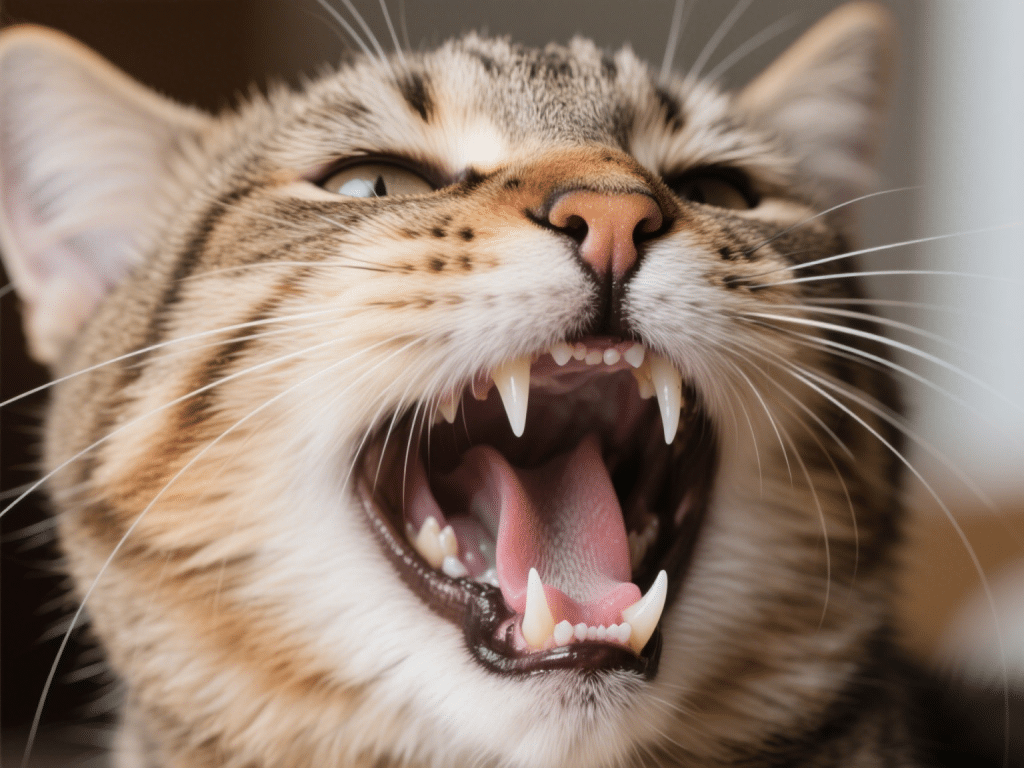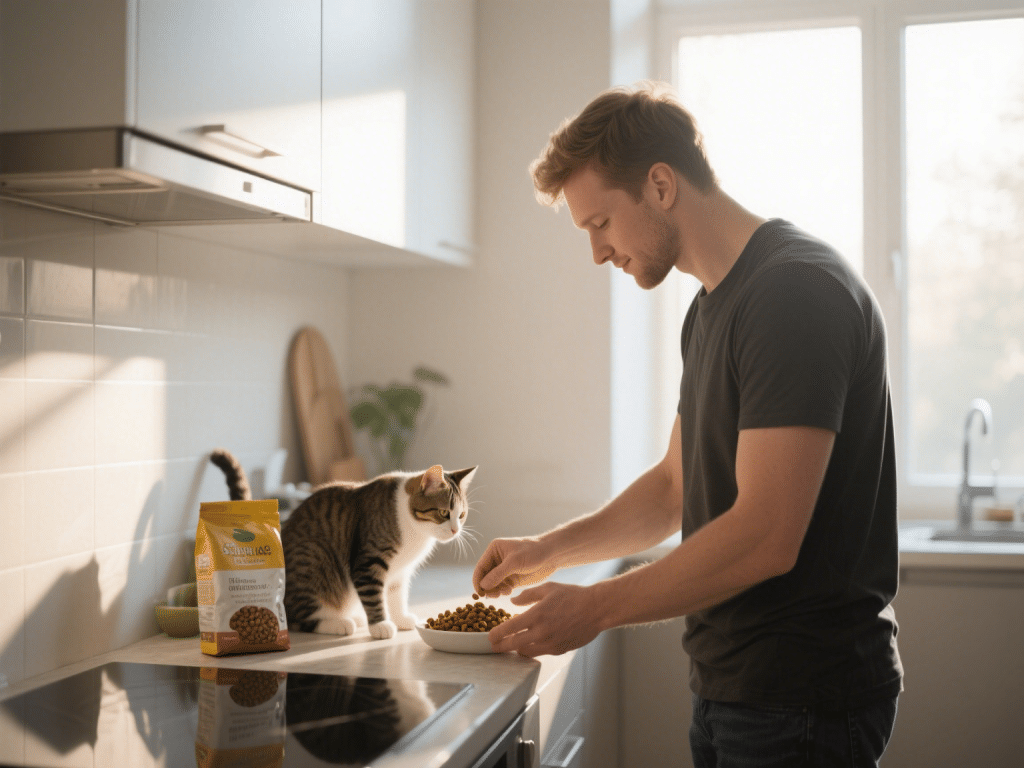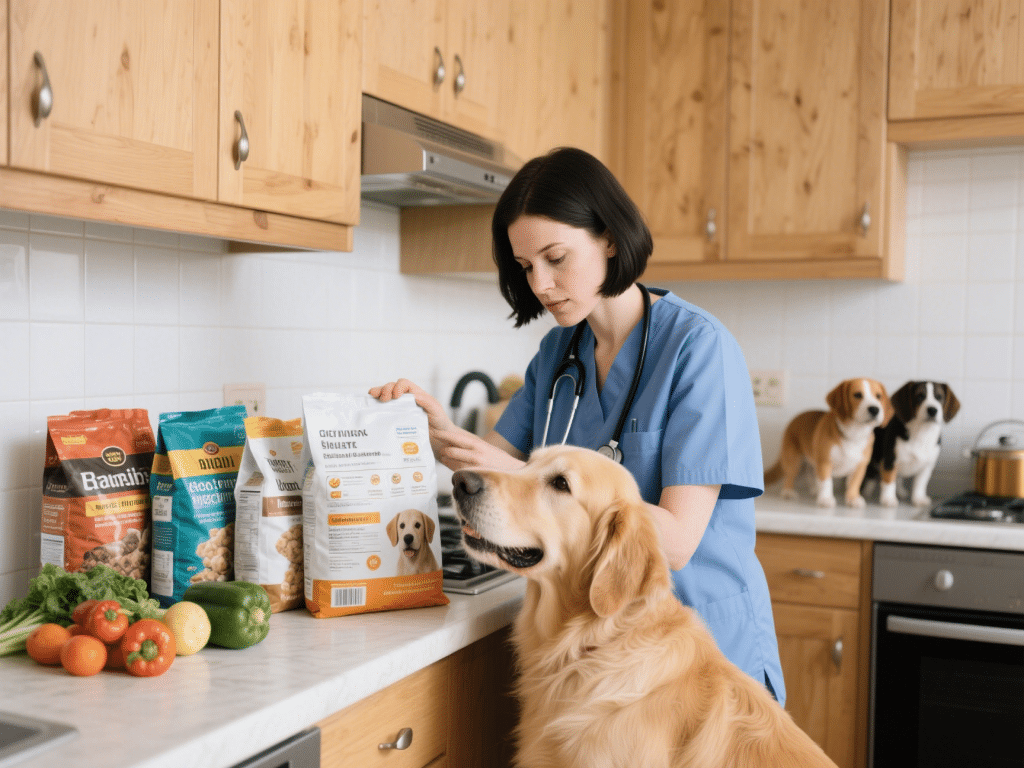
Feline Dental Health: Preventing Tartar, Gingivitis, and Bad Breath
Dental disease affects up to 85% of cats by age three—often silently. As a veterinary te...
Cats are obligate carnivores, meaning their bodies require nutrients found primarily in animal tissue. Understanding the exact nutritional needs—especially protein and fat—is crucial for ensuring your feline companion thrives. In this guide, we will explore how protein and fat function in a cat’s diet, identify high-quality sources, and discuss additional nutrients necessary for complete feline health.
Proteins are the building blocks of body tissues, enzymes, hormones, and antibodies. Unlike omnivores or herbivores, cats cannot synthesize certain amino acids—like taurine, arginine, and methionine—on their own. A deficiency in these essential amino acids can lead to irreversible health problems, including heart disease (dilated cardiomyopathy) and immune dysfunction.
Adult Maintenance: Most adult cats require at least 26–30% of their daily caloric intake from protein.
Growth and Reproduction: Kittens, pregnant, or nursing cats may need up to 35–40% protein to support rapid tissue growth and milk production.
Senior Cats: Older cats often need similar protein levels but may benefit from more digestible protein sources to maintain lean body mass.
Animal-Based Proteins:
Chicken, Turkey, and Duck: Lean and highly digestible, these are often top ingredients in premium cat foods.
Beef and Lamb: Provide robust amino acid profiles but can be higher in fat; balance accordingly.
Fish (e.g., Salmon, Tuna): Rich in omega-3 fatty acids, which also support skin and coat health.
Hydrolyzed Proteins: Used in some prescription diets for cats with food sensitivities, these proteins are broken down into smaller peptides for easier digestion.
Fats supply concentrated energy and are involved in:
Absorption of Fat-Soluble Vitamins: Vitamins A, D, E, and K require dietary fat to be absorbed efficiently.
Essential Fatty Acids: Linoleic acid (omega-6) and alpha-linolenic acid (omega-3) must be obtained from the diet.
Cell Membrane Integrity: Fatty acids maintain healthy cell membranes, influencing skin, coat, and organ function.
Adult Maintenance: Typically, 10–20% of total calories should come from fat.
Active or Pregnant Cats: May require slightly elevated fat (up to 25%) to meet increased energy demands.
Animal Fats (Chicken Fat, Pork Fat): Highly palatable and energy-dense.
Fish Oil: Supplies EPA and DHA, two critical long-chain omega-3 fatty acids that reduce inflammation and support brain health.
Flaxseed Oil: Contains omega-3, but cats have limited ability to convert ALA to EPA/DHA, so fish oil is often preferred.
Limited Role: Unlike dogs, cats lack significant amylase activity; too many carbs can lead to weight gain or glycemic issues.
Dietary Fiber: Helps maintain intestinal motility. Sources include beet pulp or pumpkin puree, but only in small amounts.
Taurine: Critical for heart health, vision, and reproduction; found in animal muscle tissue.
Vitamin A & D: Preformed (retinol and cholecalciferol) are essential since cats cannot convert beta-carotene effectively.
Calcium & Phosphorus: Maintain bone density; require a proper ratio (approximately 1.2:1 calcium to phosphorus).
Magnesium: Too high levels may predispose cats to urinary crystals; ideal commercial diets balance magnesium carefully.
Cats tend to have low thirst drive. Offering wet food or ensuring access to fresh water prevents dehydration and supports urinary tract health.
Commercial Diets: Look for AAFCO (Association of American Feed Control Officials) statements ensuring “complete and balanced” nutrition.
Home-Prepared Diets: If you choose to formulate homemade recipes, work with a veterinary nutritionist to avoid deficiencies or excesses. Unbalanced home diets can lead to nutrient deficiencies (e.g., calcium) or toxicities (e.g., vitamin A).
Ingredients are listed by weight on a “as fed” basis. The first few ingredients should be named animal proteins (e.g., “chicken,” “salmon meal”).
“Guaranteed Analysis” panels indicate minimum crude protein and crude fat percentages, and maximum moisture, fiber, and ash. Aim for at least 30% crude protein and 10% crude fat on a dry matter basis for adult cats.
Indoor Cats: Lower activity levels may require fewer calories; monitor weight and adjust portion sizes.
Senior Cats: May benefit from joint-support supplements (glucosamine, chondroitin) and highly digestible protein.
Medical Conditions: Renal disease or urinary issues often require specialized, low-phosphorus or urinary alkalinizing diets—consult your veterinarian.
Portion Control: Follow feeding guidelines on your chosen food’s packaging, adjusting for age, weight, and activity. Monitor body condition (ribs palpable with slight fat cover).
Feeding Frequency: Adult cats typically do well on two meals per day; kittens often need three to four smaller meals.
Slow Introductions: When switching foods, gradually mix the new diet over 7–10 days to avoid gastrointestinal upset.
Monitor Body Condition Score (BCS): Use a 1–9 scale; ideal is 4–5. Adjust calories if weight drifts outside ideal range.
Avoid Over-Supplementation: Only supplement when directed by a veterinary professional—too much vitamin D or calcium can be harmful.
Optimal feline nutrition revolves around meeting essential protein and fat requirements while ensuring a balance of vitamins, minerals, and water. By selecting high-quality commercial diets or working with a veterinary nutritionist for homemade meals, you can ensure your cat enjoys a long, healthy life. Always monitor weight and behavior, consult your veterinarian for routine checkups, and adjust dietary plans as your cat’s life stage and health status evolve.

Dental disease affects up to 85% of cats by age three—often silently. As a veterinary te...

Indoor cats face unique challenges: reduced activity, limited environmental stimulation, a...

IntroductionAquarium hobbyists increasingly seek sustainable decor choices to minimize env...

IntroductionMany cat owners enjoy late-night bonding sessions with their feline friends, b...

IntroductionWhen temperatures soar, dogs can overheat quickly. Frozen treats not only cool...

Understanding Dog Nutrition: What to Feed Your Canine CompanionProper nutrition is the cor...
Comments on "Understanding Your Cat’s Nutritional Needs: Protein, Fat, and More" :